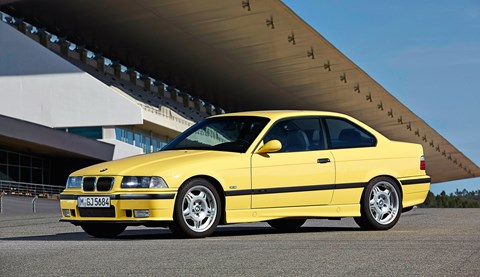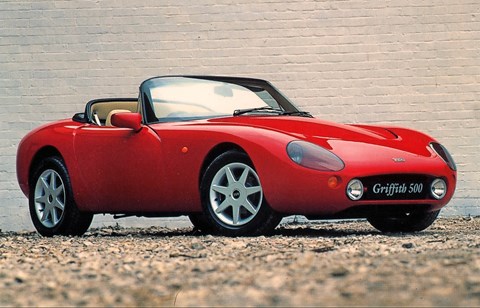► A look at classic car values
► Are prices spiralling out of control?
► Classics experts analysis market trends
As the hammer fell on the 1962 Ferrari 250 GTO at Bonhams’ Quail Lodge auction last autumn, the market analysts were busy revising their price forecasts. The headline price of $38,115,000 (£22.8m) – a new auction world record – captured headline writers’ imaginations, but the truth is that the Pebble Beach auction in August actually put a lid on classic car values.
Until the high-profile sale, recent GTO transactions took place in private, with the prices achieved subject to wild speculation. GTOs were notionally hyped up to £30-35m, inflating prices of classics across the board. Experts thought differently: a GTO was worth £20-25m – as Bonhams proved.
This is good news for the whole classic car market, silencing whispers that we were heading for an early-’90s style price crash. Marcus Atkinson, the MD at Hagerty’s Cars That Matter, the classic car values bible, reckons, ‘the sale of that car for “just” $38m was a positive sign that rationality still rules in the marketplace, rather than a sign that things are cooling rapidly’.
Click here for CAR’s coverage of the world record auction sale.
Classic car prices: boom or bust?
The early-’90s crash was linked to the bubble bursting in Japanese real estate and stocks. ‘The markets started to recover from about 1998,’ says Dietrich Hatlapa, founder of the Historic Automobile Group International (HAGI), an independent classic car values think tank. Since then, there’s never been a year where classic car prices fell back.
This was just as true for anything from your entry-level Porsche 911SC all the way to blue-chip, competition Ferraris, the long-time darling of the classic car investor. The really interesting changes have taken place since 2008, when the global economic meltdown forced everyone to re-evaluate their finances. In a market where more conventional investments have frequently struggled, classic cars have continued to surge upward.
Hatlapa, whose company tracks prices of the most important classic cars, says: ‘For most of the past six years, our HAGI Top Index measured double-digit growth rates, and during 2013 we observed record growth of more than 40%. So far, 2014 is turning out to be a more moderate year, growing 8.42% to the end of July.’ The GTO will no doubt rein that in further.
Hagerty’s Atkinson adds: ‘From 2011 to 2013, the market recovered to the point where nearly every sub-market was trading at all-time highs. Although there are signs that it’s levelling off, it will likely remain strong until the next global economic crisis.’ And while interest rates remain at historic lows, classic cars continue to be a fun way of growing your money.
Are classic values entering a boom period in 2015?
So what makes today’s market different to that of the early 1990s, when values crashed spectacularly? Significantly, 2013 aside, growth has been steady rather than spectacular, and whereas in the 1980s the emphasis seemed to be purely on vehicle condition (with a consequent tidal wave of often questionable restorations to order), today cars are valued for their history and provenance. Patina is all.
Tellingly, far fewer classic cars are bought with borrowed money today, and buyers are much better educated about a more international market – so the compulsion to sell at a loss lessens when local troubles occur. It’s easy to move your car on in another, more prosperous, overseas market these days. Rob Sass, a Hagerty’s analyst in California, bought a 200,000-mile Porsche 911SC in 2012 for the equivalent of £7800. He sold the car in Germany two years later for about £14,000. ‘I suspect that the German will make a profit on the car too, as the market on rust-free, clean ex-California 911s in Germany seems brisk,’ he says.
So, while the years of spectacular growth in classic car values might be over, there’s little danger of them crashing either. Expected 5% annual growth in values of the ‘right’ cars, sustained in the long term, is not to be sneezed at – and you can have a hell of a lot of fun driving your investment. What better excuse is there to cash in that ISA, dig out some money from under the sofa, and indulge in buying something classic?
Click here to find your next classic on our sister site Classic Cars For Sale.
Five £10k-£20k cars that could become future classics

BMW M3
E36 (1992-1999)
Enthusiasts’ cars are cheap compared with £25k E30 M3; desirable E36 two-door is £6k. These M cars are getting very fashionable

Mercedes-Benz 190E
2.3 and 2.5-16v (1984-1993)
190 Cosworths are a steal, unlike E30 M3s. You can pick up examples from less than £5k, although the best ones are £15k and beyond Currently undervalued, they’ll surely rise in value when buyers cotton on.

Mitsubishi Evo
Tommi Makinen Edition (2000-2001)
The tech-laden Evo costs from £8-18k, but when the Forza generation hits its 40s, this car will be top of many people’s lists

Porsche 911
3.0- and 3.2-litre (’78-’89)
The value of impact-bumper 911s has doubled from £10k to £20k these past four years. 911s tend to be mechanically robust

TVR Griffith
(1991-2002)
The Griffith’s realistic entry price is £15k, rising beyond £30k for the very best examples. Demand will remain high as it ages disgracefully
Where would you spend your classic cash? Let us know in the comments below.